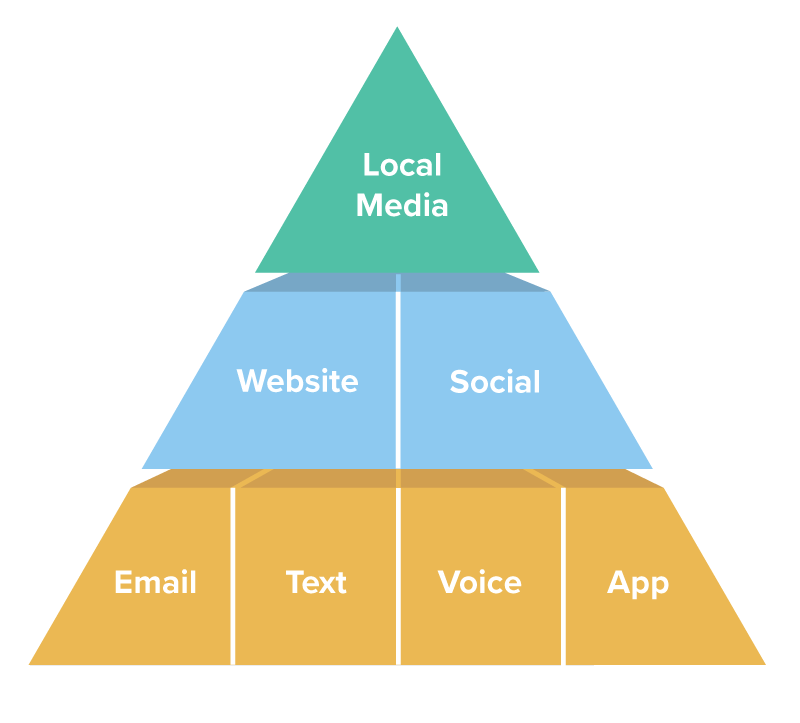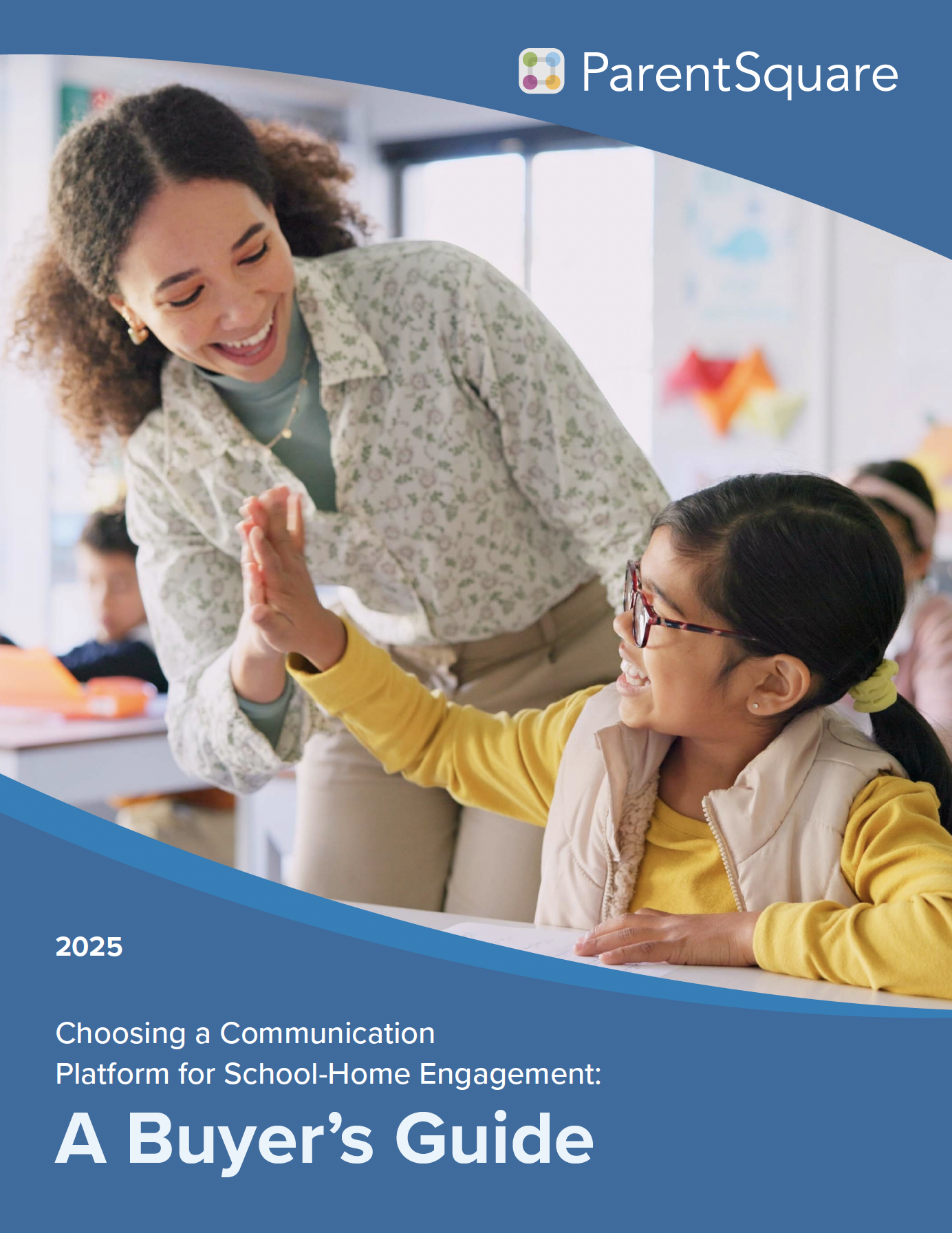Every stakeholder has a different preference on how, where, and when they want to receive communications – some may prefer emails throughout the day, while others want one text at the end of the day with all notifications.

As a communications leader, it’s important to keep this in mind and meet people where they are. By providing communications in the way that each stakeholder prefers, it makes it easier for them to engage.
We’ve broken communication channels down into a three-part pyramid. Let’s go through it step by step.
Part 1: Your Communications Foundation
To build a strong foundation and ensure you are reaching your three primary stakeholders – parents/guardians, staff, and students – you need to start by tackling the most direct ways to reach them. These are typically email, text, voice, and app.
Here are some things to consider when utilizing these channels:
- Distinguish between important information and general information.
- General information is non-urgent and should be sent via the user’s preferred notification method.
- Important information is time sensitive and should be sent through every channel available to ensure families and staff are receiving it immediately.
- Leadership should always be the first to receive important communications so they can prepare for any questions they may receive.
- Staff should receive important information before families and students, so they also have time to prepare.
- Set clear expectations with those that have the ability to send important communications via voice or alert – make sure they know what situations call for these channels so they don’t over-use them.
- Make sure everyone can understand the message you’re sending. One size does not fit all when it comes to communications – consider language preferences, timing, and notification preferences.
Part 2: Extend connections with website and social media
Beyond the four channels in Part 1 of the pyramid, you can expand your reach to different audiences and increase engagement by utilizing your website and social media.
Website
Your website can be used to both share necessary information and showcase your district to attract new families and staff. Here are some things to consider with your website:
- Design and color choices – Make sure you follow your visual brand guidelines to ensure consistency in your district webpages and materials.
- Clear navigation – Keep the structure simple by grouping like topics and categories together – make it easy for viewers to find what they’re looking for.
- Using negative space – Utilize the space in between your text and graphics/videos to provide visual breaks and highlight important information.
- Appropriate typography – Typography is the presentation of the text content on your website. Format text so that it is easy for viewers to understand the who, what, when and where of the text.
- Designing for your audience – Your website is typically the first impression of your school – the website should reflect the school or district personality.
- Graphic content – Images and videos can help you display school personality and activities.
- SEO and analytics – Search engine optimization (SEO) is the process of making your site better for search engines and viewers. You can improve SEO by using accurate page names, descriptions, and custom URLs.
Here are a few examples we love:
Social Media
Social media is the one place where almost everyone is. Perhaps most importantly, utilizing social media can help you connect with stakeholders in your community who don’t have children in schools and might not receive communications through direct channels.
It’s important to keep social media a positive experience – try to keep policy and controversial topics off of your accounts. The stakeholders that need important information are already getting it via email, text, voice, or app notification, so you don’t need to share those details via social media for everyone else to see. Instead, use social media to share amazing stories, good news, and attention-grabbing visuals! You can also share hiring opportunities and information to get them in front of your local residents.
Part 3: Grow relationships with local media
The final channel to consider is local media. Building mutually beneficial relationships with your local media will ensure fair coverage in bad times and promotion of your district in good times.
Bristol Public Schools Executive Director of Communications Brian Burke, in Bristol, CT, shared that the key is to be transparent and as timely as possible. According to Brian, you can build trust that the coverage is fair, and ensure that each news outlet gives you the opportunity to comment on your district first.
It’s important to utilize multiple channels and reach stakeholders in the ways that work best for them to ensure that everyone is receiving and engaging with information. By building a strong foundation and extending it to more channels like social media, website, and local news, you can improve communications and engagement in your district.
You can learn more about utilizing communication channels in Part 3 of the Complete District Communications Playbook.







